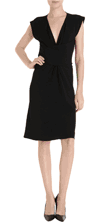Textiles, Merchandising and Fashion Design, Department of
First Advisor
Katherine Polston
Document Type
Thesis
Second Advisor
Jennifer Johnson Jorgensen
Date of this Version
Spring 4-20-2017
Third Advisor
Michael James
Abstract
A review of existing literature demonstrates the need for additional research on female home-based business owners. This study aimed to partially fill the literature gap by exploring the demographic profile of female home-based textile-design bloggers, a unique segment of the female home-based business world.
The findings of the qualitative content analysis of the 30 designers’ blogs and 138 blog posts included the findings of their age, nationality and ethnic identity, current place of residence, family status, educational background, occupation, and socioeconomic status. These findings were then reduced into numbers and percentages. Findings of the analysis show that designers vary from implicitly or explicitly posting their demographic information; some designers are very up front about who they are while others are less revealing and their information must be obtained by inference.
The findings highlighted the fact that designers were more open to discussing their parental status than their marital status, both under the category of family status. On the other hand, age and income were rarely shared openly. Analysis of blog content found that of the designers that publicized work information (n=27), the majority (n=23) only own and operate a home-based business, while a few (n=4) had a day job outside of the house in addition to their HBB. The findings show that designers mostly (n=7) have informal education in design as opposed to a college or university degree (n=4). Findings also demonstrate that the use of e-commerce and other tools such as CAD are indispensable to home-based textile designers.
Advisor: Katherine Polston
Included in
Art Practice Commons, Communication Technology and New Media Commons, Critical and Cultural Studies Commons, Fashion Business Commons, Gender, Race, Sexuality, and Ethnicity in Communication Commons, Scholarly Publishing Commons


Comments
A THESIS Presented to the Faculty of The Graduate College at the University of Nebraska In Partial Fulfillment of Requirements For the Degree of Master of Arts, Major: Textiles, Merchandising, and Fashion Design, Under the Supervision of Professor Katherine Polston. Lincoln, NE: April, 2017
Copyright (c) 2017 Khadijah Baaqil